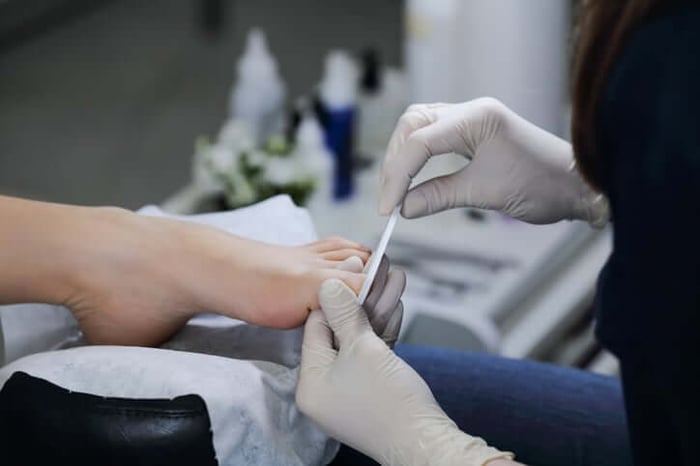During the summer, we see our fair share of fancy flip-flops, trendy sandals and, often, troubling ingrown toenails. While your focus as a nail professional is on delivering beautiful, healthy nails, it’s just as important to recognize when there's something not right with your clients' nails. After all, they come to you as the expert on all things nails. And that's when you need to know your limits: when it's OK to care for the nail and when you need to refer them to a medical expert.
Know the Signs
One of the more common issues you may see is an ingrown toenail. This occurs when the nail presses into the skin causing redness, tenderness, swelling and even infection if left untreated. Causes vary, but the most common culprits include improper nail trimming, tight footwear or trauma to the toe.
If you notice any signs of infection (think: inflammation, heat or pus), you need to stop the service immediately. Not only could continuing the service worsen the issue, but as a licensed nail tech, working on an infected or compromised nail is outside your scope. Kindly let your client know that you cannot continue the pedicure service, and recommend that they visit a physician in order to care for what you believe to be an ingrown nail. Use caution not to diagnose any condition, as that too is outside your scope of service.

Safe Pedi Practices
Follow these guidelines to ensure that you're using best practices to caring for your clients, particularly ones prone to ingrown toenails.
Take a Close Look: Always inspect the nails and skin before starting on a pedicure. This is a good habit whether you're looking for ingrown toenails or other nail/skin conditions. If you come across a slightly curved nail that’s putting pressure on the skin but hasn’t yet broken it, you can still work on it. But any visible irritation, drainage or strong discomfort? Stop and refer to a doctor.
Use the Right Tools: For clients with naturally curved nails, opt for a flat-edge nipper to trim the sides of the nail to help it grow out straight. Specialty ingrown nail files are amazing because they have a fine grit that can help refine the nail’s edge.
Straight Is Safe: It's best to file nails straight across, as this supports healthy growth and minimizes the risk of the nail digging into surrounding skin. If the edges feel too sharp, gently round them.
Moisture Matters: Dry skin can increase the risk of irritation. In addition to gently exfoliating any rough areas and applying hydrating creams during the pedicure service, encourage your client to maintain that moisture at home with regular use of cuticle oil.
Educate Along the Way: Your clients are looking to you for care and advice. Take this time to educate them on how to maintain their toenails between visits, the importance of correct filing, avoiding overly short trims and wearing well-fitted shoes that don’t place pressure on the toenail area.
It’s essential to remember: Nail technicians are not medical providers. Your work supports beautiful, but basic foot care. Anything that signals infection, injury or persistent pain is best handled by a physician. However, you can set yourself apart by putting together a trusted network of local podiatrists to whom you can refer your clients. This will not only help your clients, but it will also enhance your reputation as a knowledgeable, safety-focused tech.

